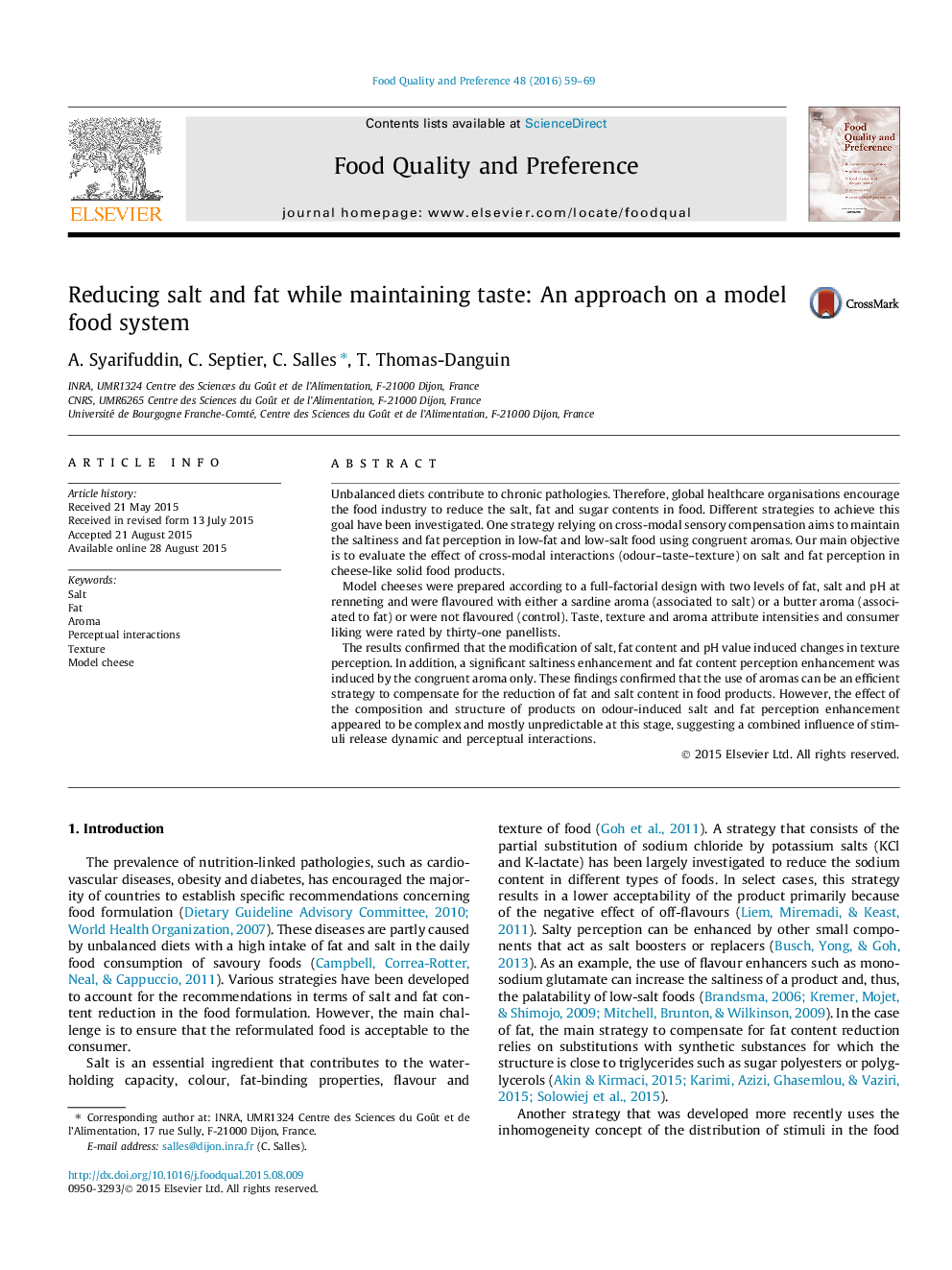| Article ID | Journal | Published Year | Pages | File Type |
|---|---|---|---|---|
| 6261178 | Food Quality and Preference | 2016 | 11 Pages |
â¢Odour induced salt enhancement (OISE) compensated for sodium reduction in cheese.â¢Odour induced fatty enhancement (OIFE) compensated for fat reduction in cheese.â¢Texture and solid food composition highly modulate OISE and OIFE.â¢Liking of flavoured cheeses is dependent on composition and texture.â¢OISE and OIFE can be used as a sensory compensation strategy in low-salt low-fat food.
Unbalanced diets contribute to chronic pathologies. Therefore, global healthcare organisations encourage the food industry to reduce the salt, fat and sugar contents in food. Different strategies to achieve this goal have been investigated. One strategy relying on cross-modal sensory compensation aims to maintain the saltiness and fat perception in low-fat and low-salt food using congruent aromas. Our main objective is to evaluate the effect of cross-modal interactions (odour-taste-texture) on salt and fat perception in cheese-like solid food products.Model cheeses were prepared according to a full-factorial design with two levels of fat, salt and pH at renneting and were flavoured with either a sardine aroma (associated to salt) or a butter aroma (associated to fat) or were not flavoured (control). Taste, texture and aroma attribute intensities and consumer liking were rated by thirty-one panellists.The results confirmed that the modification of salt, fat content and pH value induced changes in texture perception. In addition, a significant saltiness enhancement and fat content perception enhancement was induced by the congruent aroma only. These findings confirmed that the use of aromas can be an efficient strategy to compensate for the reduction of fat and salt content in food products. However, the effect of the composition and structure of products on odour-induced salt and fat perception enhancement appeared to be complex and mostly unpredictable at this stage, suggesting a combined influence of stimuli release dynamic and perceptual interactions.
